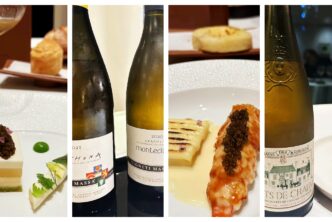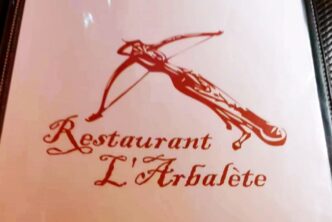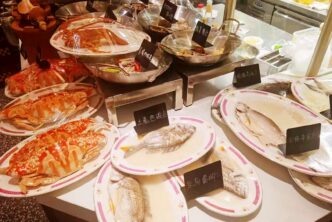Il Latini
Via dei Palchetti 6/r
50123 Florence
Tel. +39 055 210916
The dishes
Mixed cold cuts (Affettati misti)
Spelt salad (Insalata di farro)
Onion cooked under the ashes (Cipolle sotto ceneri)
Florentine steak in the rib-eye (Bistecca Fiorentina nella costola)
The wines
Col d’Orcia 1977 Brunello di Montalcino Riserva 97
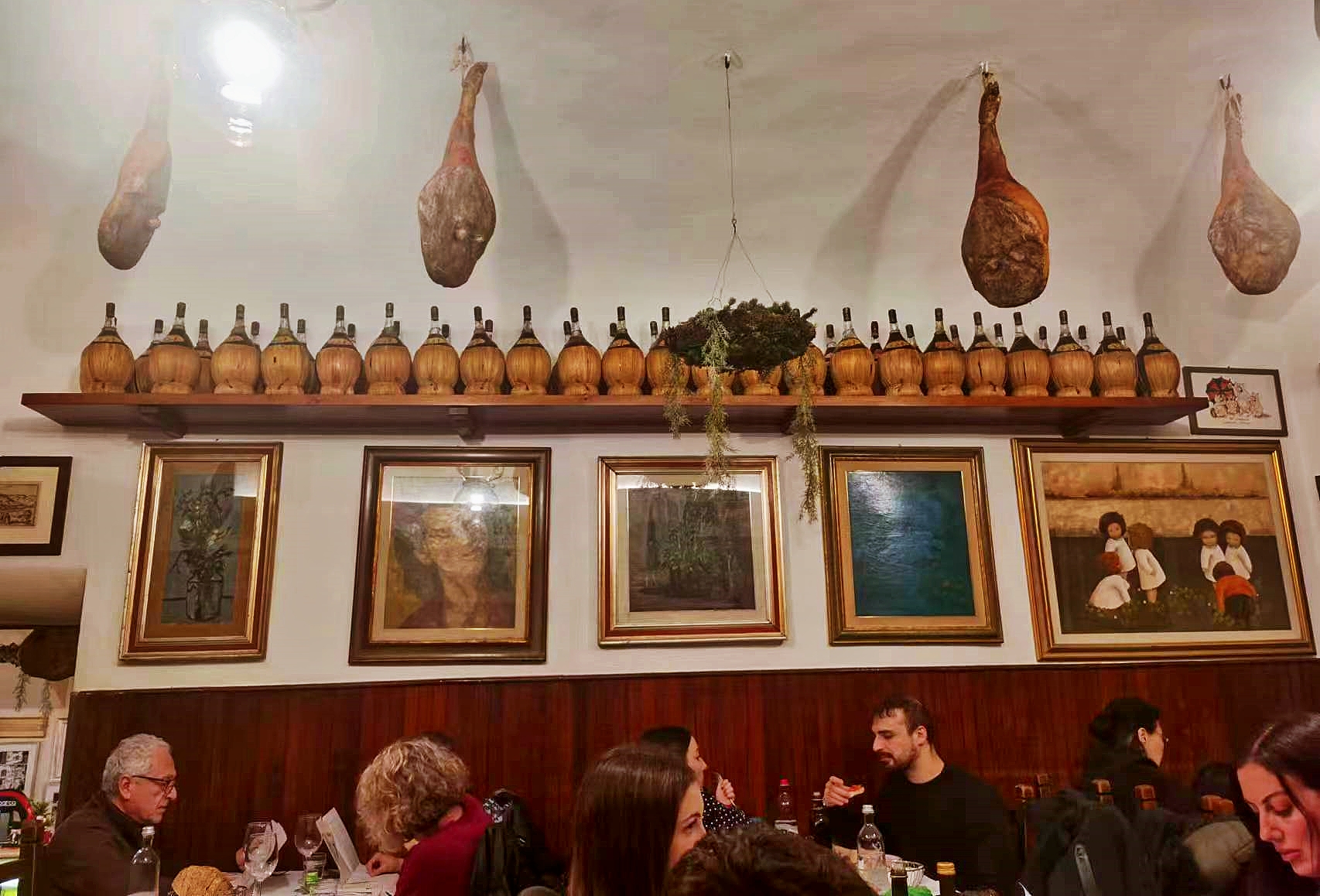
Il Latini is very much a “dining institution” of Florence as a must-go to place when looking to dine in an authentic Florentine trattoria. This is especially so if beef is what you pine for, as Il Latini is especially famous for its Bistecca Fiorentina, one that is considered to be among the “top ten” in the city by many restaurant guides (both paper and website). But somewhat tellingly, not not all local Italians are quite as supportive.
The restaurant boasts a long history. Founded in 1911 by Angelo Latini initially as a fiaschetteria (a fiaschetteria is a simple shop were people traditionally would go to fill their bottles, jugs or demijohns with the house wines), but was then upgraded to restaurant status by Narciso and his wife Maria. It was the latter who cooked the typical Tuscan dishes at home and then brought over the pots to the noble Palazzo Rucellai, where the restaurant, now manned by the fourth generation, is still housed today on the ground floor.
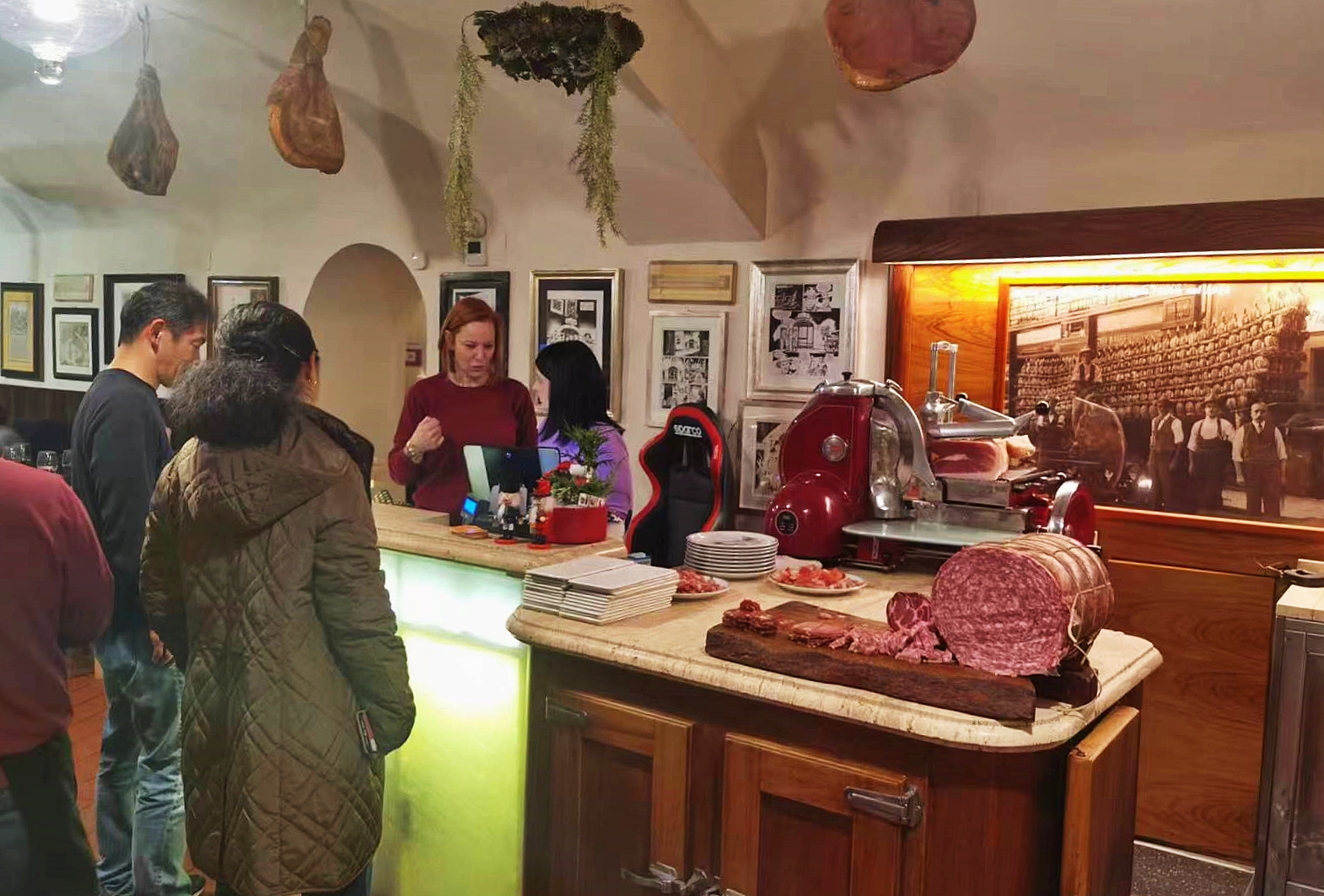
The restaurant’s look today isn’t much different than it was decades ago. It still looks and feels like a bastion of traditional, typical Florentine/Italian fare. It boasts tightly packed tables in plain white walled rooms from where prosciuttos hang in full display. There is a rustic charm to the simple interior, with terracotta floors, wood paneling, and grandmother like tables and chairs that don’t look so comfortable but, all things considered, do their job well enough. The tables are actually packed fairly close together, but the acoustics in the rooms are such that you can actually hear your dining companion talk. Furthermore, the expert, almost military-like service of the waiters, mostly long in the tooth and in experience, is punctual, with explanations that are friendly and helpful, if concise. The food and the wine are good too: and so in the end, it all seems like it should work and make for a fun, perhaps even memorable meal. Unfortunately, that was not the case at all my recent evening there.
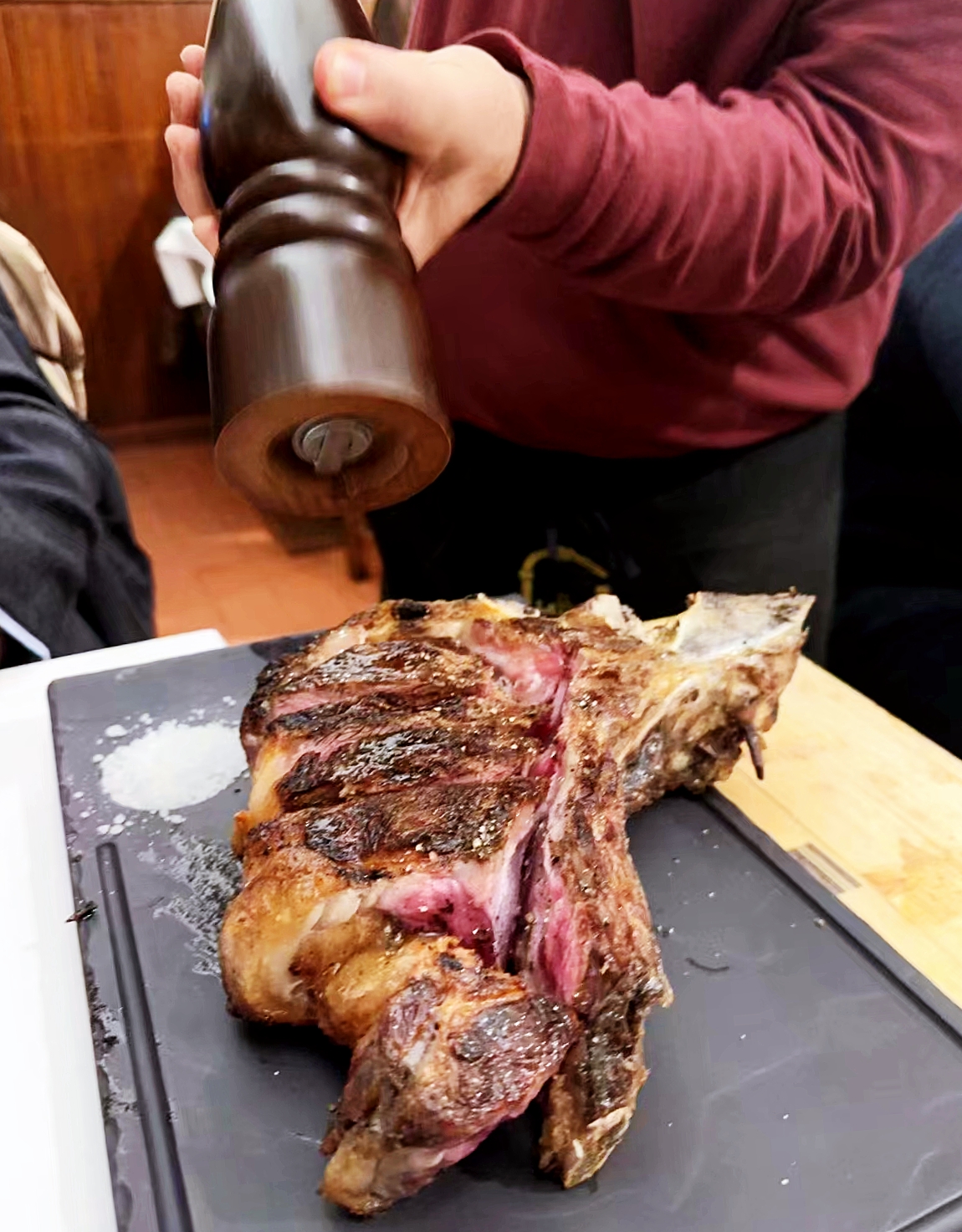
Il Latini’s menu is about as Tuscan and as straightforward as they come: cold cuts, pecorino (sheep milk) cheese, beans, ribollita, steaks are everywhere. But everybody comes to Il Latini for the steaks, and the Fiorentina especially. The “Fiorentina” is available all over Italy: just beware that there are two kinds, the Fiorentina nella costola (the Florentine steak with the ribeye) and the Fiorentina nel filetto (the Florentine steak with the tenderloin or filet, or classic T-bone steak). All over Italy, it is the latter they always serve you, but in Florence there is the option of having one or the other served, or both, leaving you to choose which one you prefer. Most people want and expect the classic T-Bone steak they are accustomed to eating back home, with the filet (again, that’s called the Fiorentina nel filetto, or with the tenderloin). However, true gourmets know that it is the other cut (the Fiorentina nella costola, or with the ribeye) that is usually the better of the two. Why is that, I hear you ask? Though it may surprise some, this is actually so for a number of reasons. While all Fiorentina steaks are cut from the loin (just above the rib cage and below the rump or round), there is a big difference between cuts higher up and those from lower down. The lower cuts constitute the Florentine steak in the tenderloin (Bistecca Fiorentina nel filetto) and only these have the filet (a filet mignon is the central part of the tenderloin). This muscle hugs the interior of the cow’s spine and doesn’t get exercised much; for this reason the filet is the most tender of all steaks and is referred to in some circles as “fork-tender”. Not surprisingly, it is also the leanest, which means that, while healthy, it is also rather flavourless (you understand now why in the USA they wrap beef filets with bacon and why in France they serve them with sauce Béarnaise: the meat’s flavour needs to be kicked up a notch, or two). By contrast, ribeye steaks are cut from a roast situated under the rib cage; this muscle works much harder than the filet, and it is generously marbled with intramuscular fat, making for a much tastier if not quite as buttery-soft steak. And though there is no accounting for tastes, the deeper, more complex flavour of the Florentine steak with the ribeye is one reason why true epicures and gourmets will knowingly choose that Fiorentina cut over the other. Another reason for choosing the Fiorentina with the ribeye is that it’s much easier to evenly cook through, as opposed to the one with the filet (the filet requires a different cooking time than the rest of the steak, but clearly that can’t happen when you are cooking the whole steak at once). You don’t have this difference in cooking time requirement with the Fiorentina in the ribeye, so the latter cut usually gets you a better cooked steak.
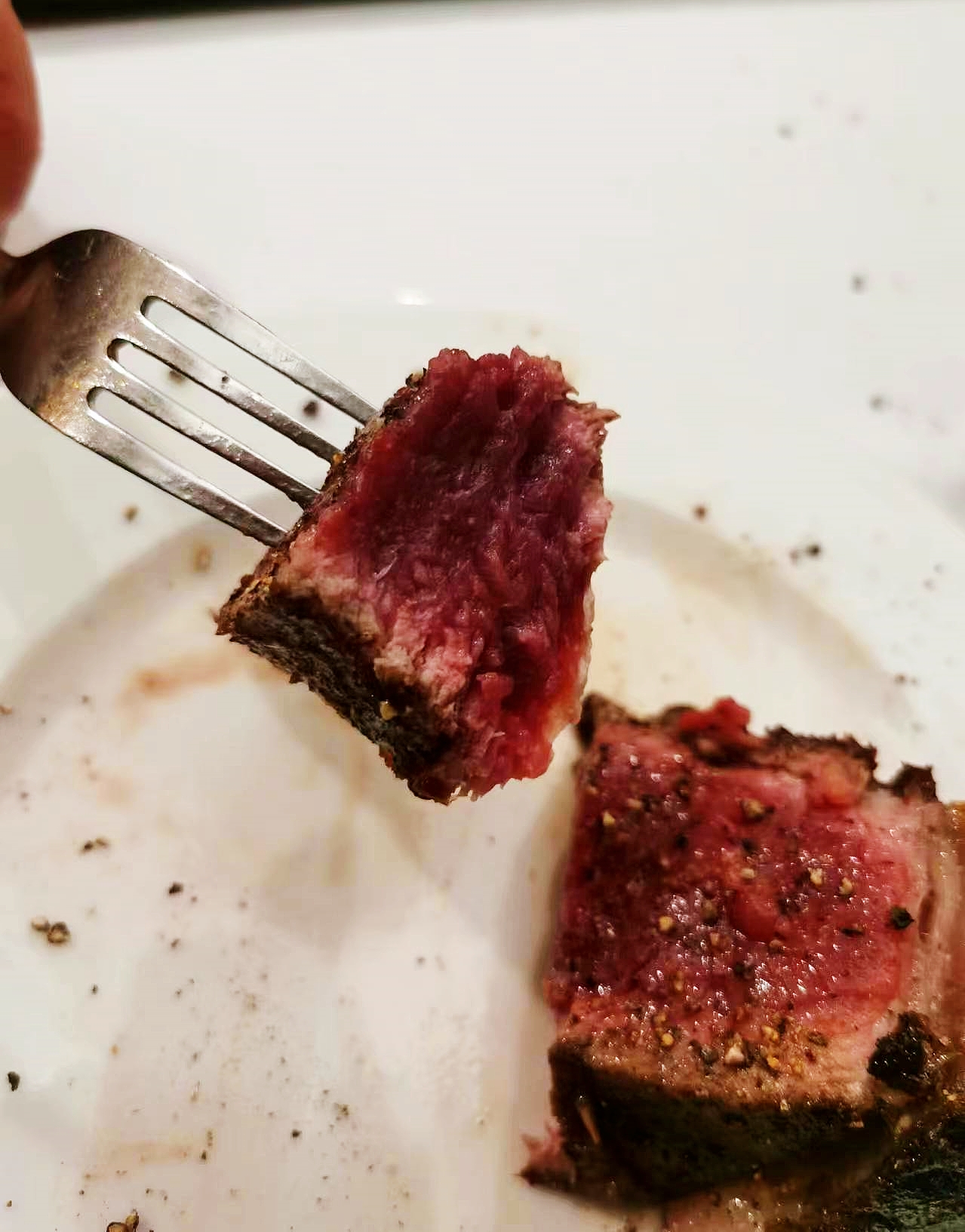
The steak at Il Latini was excellent (I chose the one nella costola or “in the ribeye”, as I almost always do). Over the years some have complained about Il Latini’s steak not being quite up to par or how it used to be, and that it no longer belonged amongst the “Fiorentina-greats” of the city anymore, but to paraphrase Mark Twain, I think that “such news has been greatly exaggerated”. To be clear, my Fiorentina nella costola (with the ribeye) was just great, cooked to perfection, juicy and flavourful. No complaints there.
And there can’t be any complaints about Il Latini’s wine list either. It is super-well stocked with Tuscany’s best wines; and though most are of young vintages, there are a few exceptionally wonderful old vintages (though clearly and I’d say fairly too, you pay what you ask for). Importantly, the older bottles appear to have been very well stored over the years. I chose the Col d’Orcia 1977 Brunello di Montalcino Riserva, a magnificent wine that I have had close to a dozen times in my lifetime and still today, at almost fifty years of age, it does not disappoint. Though not as memorable as Col d’Orcia’s 1975 and 1982 Riservas, it is still a remarkably satisfying drinking experience, highlighting just how well Brunellos can age. The panoply of tertiary aromas and flavours (acidulated red berries, dried violet, potpourri, licorice and camphor, with nuances of tobacco and tar.) is enchanting. Silky-smooth and extremely long, this gorgeous Brunello wraps your palate in a warm embrace at every sip and just won’t let go. It was a marvelous accompaniment to my steak (and an other steak, for that matter).
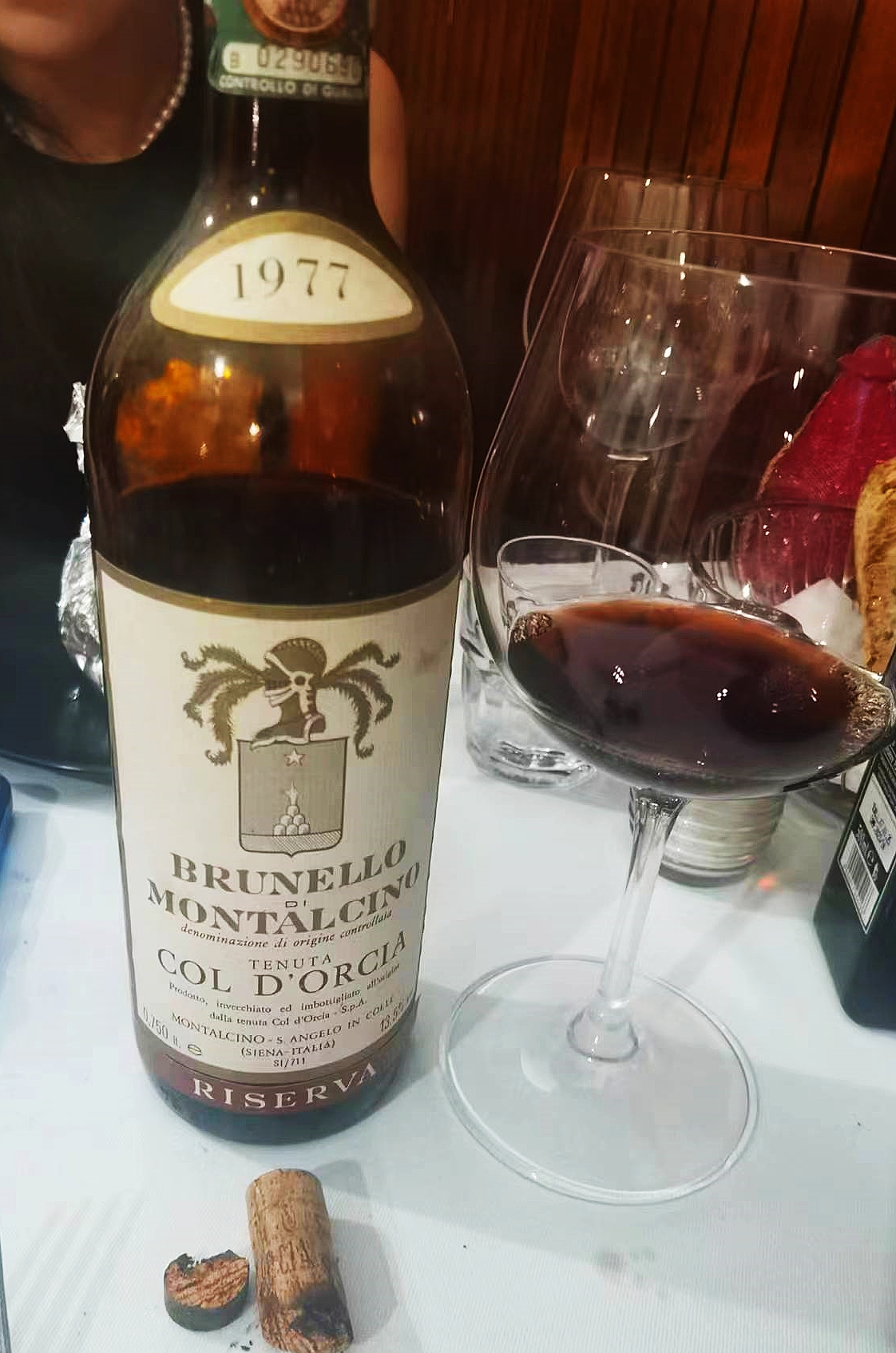
Thay was the good and positive about my evening at Il Latini. Unfortunately, some aspects of Il Latini left us scratching our heads and essentially ruined the evening for us. For example, entry into the restaurant at the earlier dinner times is regulated by a sort of call to arms, with everyone standing outside waiting to go inside once their name to be called. The wait is anything but pleasant with people cramped together and pushing to get in through the small door; also, somebody should tell Il Latini’s owners that on most winter evenings, Florence is cold, just in case they weren’t aware. And I wonder, what do they do in case of rain? Does everybody just stand out there in the cold and get wet too, with an army of dripping umbrellas overhead (if patrons even have an umbrella, that is)? I don’t know about you, but for me all this makes for an abysmal start to any dinner, not to mention it being about as big a romance-killer as you can think of (my dining companion, who hates crowds, was livid).
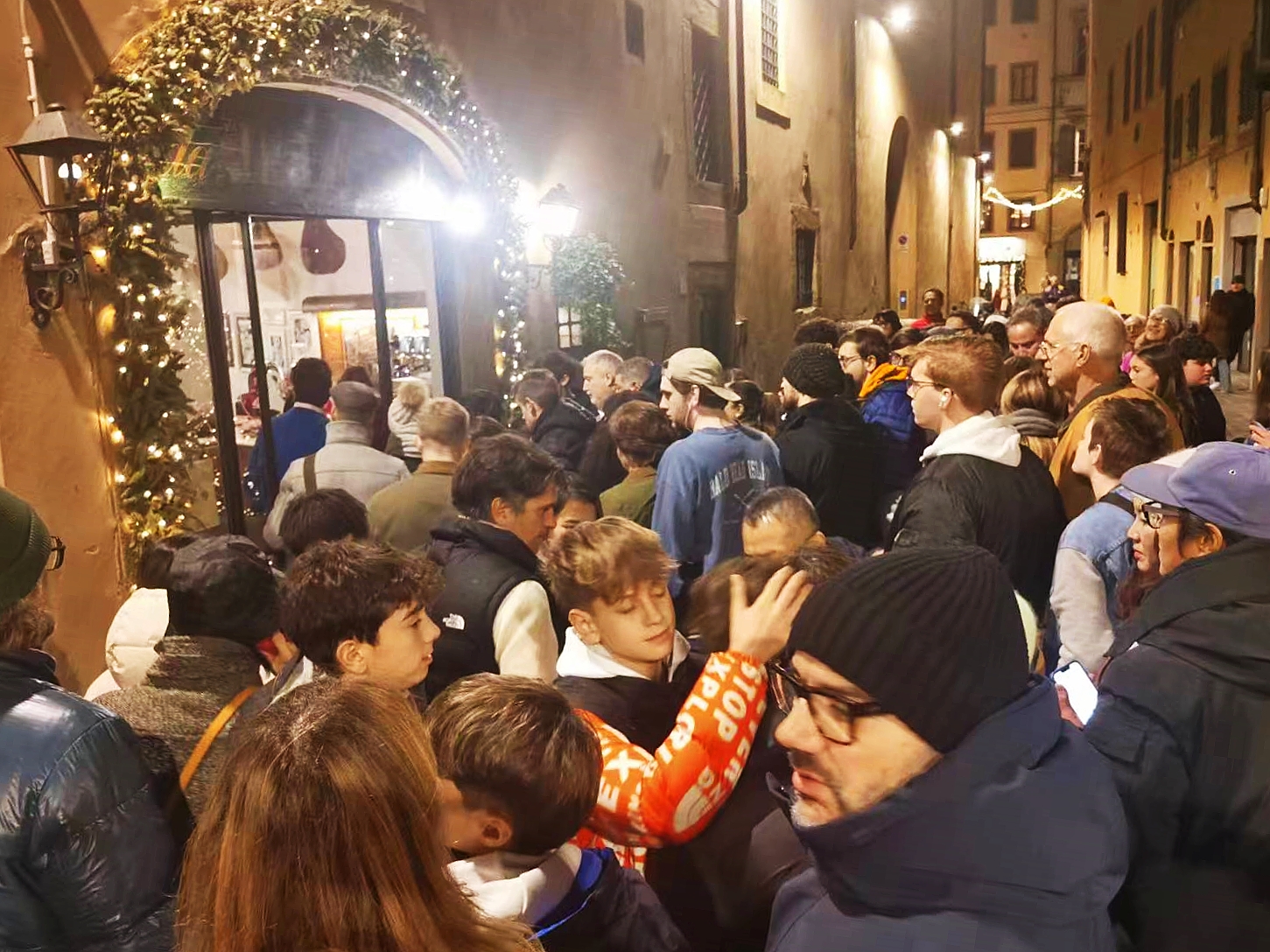
Unfortunately, that was not the worst of it. As mentioned, our Fiorentina at Il Latini was excellent: but the problem is we had to wait for it for over an hour (I repeat, over an hour). While every other table in the room was very clearly getting served in the order that they had first sit down, for some reason we were left wanting. Even our two onions cooked under the ashes reached our table about thirty minutes after we had sat down, and it was about another forty-five minutes after that for the steak to make it. That is a complete joke, and is simply unacceptable. To make matters worse, when I asked our waiter, almost fifty minutes into the wait, what was happening, he stammered a lame excuse that made no sense (about the kitchen having fallen behind because of a large party in the other room making life difficult with many different orders: utter poppycock, given that other diners seated in our room, who had arrived long after we had, were getting served without a glitch). Of course, I would never think that perhaps, just perhaps, they wanted me to order another expensive bottle of wine given that we were almost finished the one we had ordered at the start of the supposed meal, and that the meat was still nowhere in sight. But I am sure that was not at all the case at all, as we all know that touristy restaurants in touristy cities never try to pull crap like that on unsuspecting customers. For sure, there must have been some kind of problem in the kitchen, even though everybody else in our room was getting served just fine.
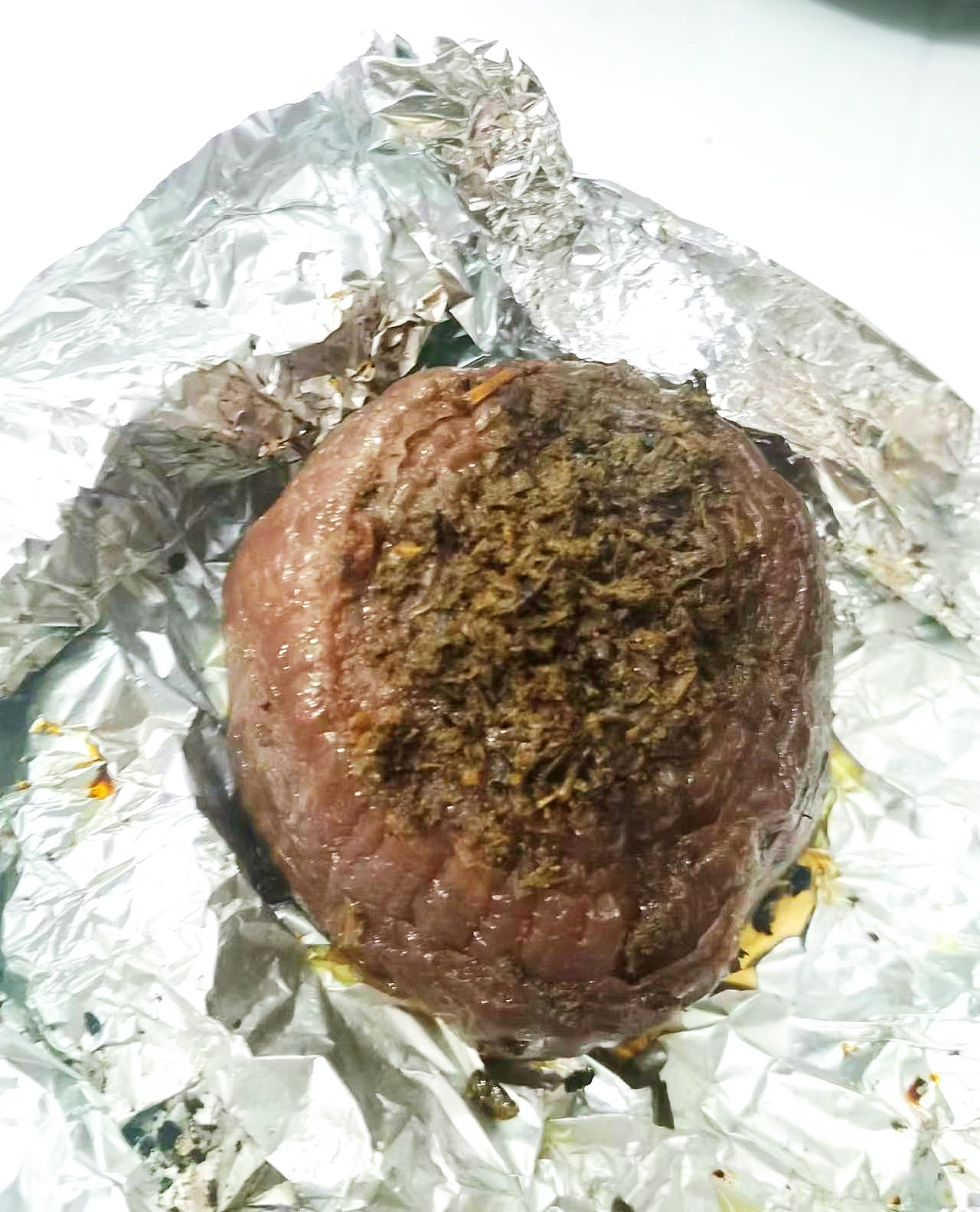
All in all, what would have been a very nice meal and evening out at Il Latini was completely marred by these two episodes, turning our experience there into a disaster, one that we will not repeat. I want to make clear I get no joy out of writing such things. Ever since I can remember, I have loved going out to restaurants, beginning to take a real interest in the work of chefs and how restaurants are run already in my teens when dining out with my family and/or friends. Still today, I am always thrilled to try new places, or just go back to old stalwarts that have weathered the passage of time in style. I also appreciate how hard it is to run a quality dining establishment and always try to give restauranters and their staff a break; for example, the mortality rate at three years out of new restaurants speaks clearly of how hard it is to make a living in this manner. Over twenty-plus years I have written plenty of restaurant reviews (for example for the Guida ai Ristoranti del Gambero Rosso and for Vinous), and having a healthy respect for the work of others, have always generally tried to find the positive in any dining experience. Some of my best friends are chefs and somms. And so, I repeat, it gives me no pleasure to criticize or to have to write poorly of any dining institution, but unfortunately, that is exactly what I find myself having to do in writing about Il Latini in Florence. In the words of my dining companion that evening, “…We will never be back”. In my own words, there are far too many wonderful restaurants where you can get a good Fiorentina in Florence (Perseus, Cocco Lezzone, Sostanza, 13 Gobbi, Trattoria Frescobaldi, BucaMario, Alla Vecchia Bettola, Da Giovanni and more) to run the risk of ruining your dinner, your evening, and your relationship by experiencing an evening like this one at Il Latini.
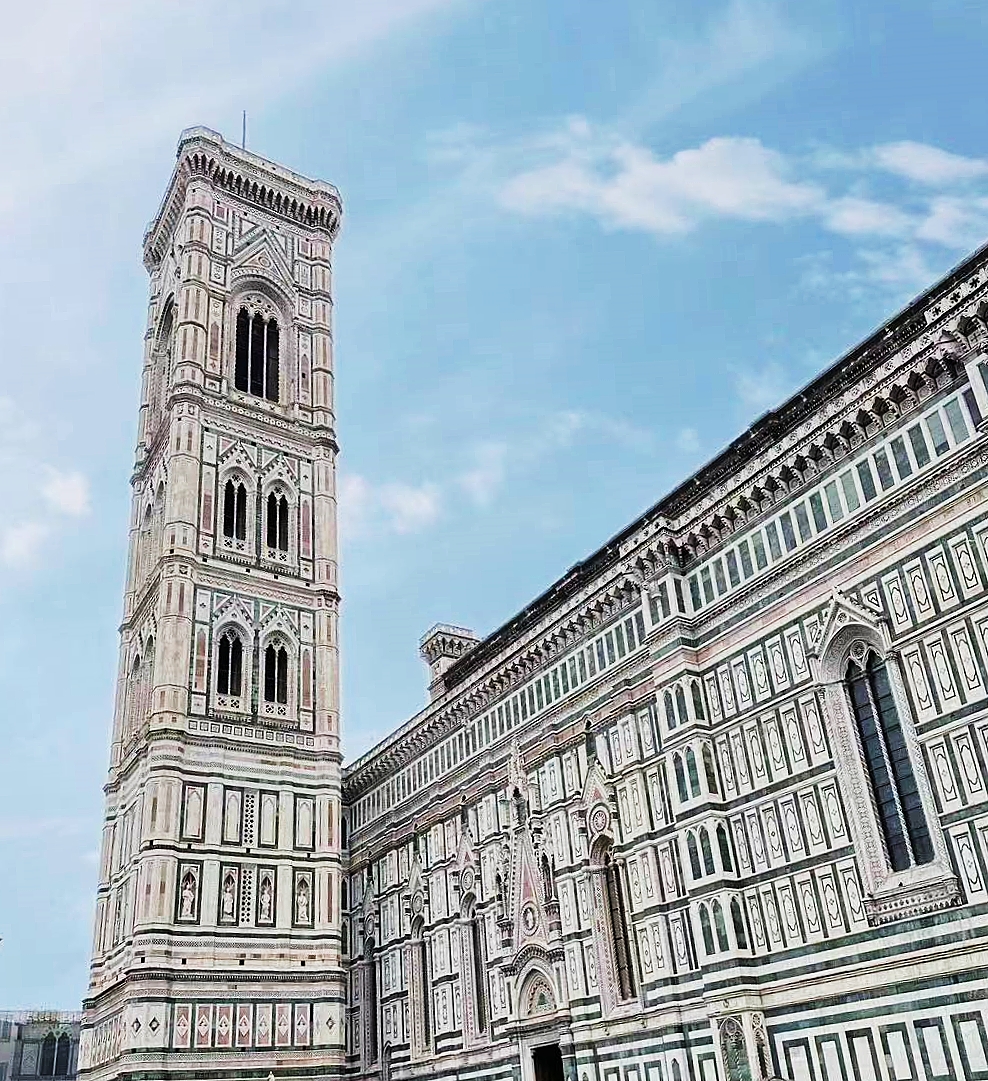

 中文
中文
